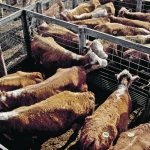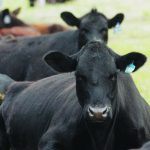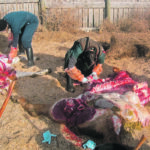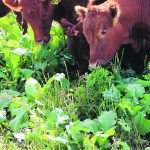Ticks seem to be expanding their territory in North America and are trending north. Animal movement facilitates this but climate change and adaptation may play a role. With ticks comes fear of potential diseases they may carry. Then there is blood loss, irritation, and performance losses in cattle if numbers get too high. Most ticks […] Read more

Provincial, national groups at odds over proposed conservation initiative
SWIFT CURRENT, Sask. — A Grasslands Conservation Initiative announced last fall has created tension between Saskatchewan cattle producers and the Canadian Cattle Association. The CCA, along with Ducks Unlimited and the Nature Conservancy of Canada, plan to protect grasslands by offering producers conservation agreements and easements ranging from short-term to perpetuity. They will contain no-break, […] Read more

Canada struggles in Korean beef market
WINNIPEG — South Korea is the most important market for American beef. In 2022, the U.S. exported US$2.7 billion worth of beef to Korea, according to data from the U.S. Meat Export Federation. That figure was $2.1 billion in 2023. In both years, U.S. exports to South Korea exceeded American beef sales to Japan. Canada […] Read more

U.S. still biggest customer
WINNIPEG – In 2012, Canada was highly dependent on the United States for beef exports. About 73 percent of Canada’s beef and cattle, by volume, were shipped to America that year. Fast forward a decade and little has changed. In 2023, 75 percent of Canada’s beef was exported to the U.S. The consistency in volume […] Read more
Canfax report
Fed market softens Alberta fed steers and heifers both traded softer compared to the previous week, averaging $263.75 and $262.64 per hundredweight, respectively. Dressed sales were reported at $433-$440/cwt delivered. Packer competition was moderate with one packer not buying. The Alberta cash-to-futures basis weakened $4.38/cwt at $11.19/cwt. This is the second strongest basis for the […] Read more

Preparing for a foot-and-mouth disease outbreak
Glacier FarmMedia – In 2001, foot-and-mouth disease decimated the U.K.’s beef industry and millions of animals were culled. According to the BBC, there were 2,000 cases of the disease, which resulted in entire farms having their animals slaughtered. Soldiers dug mass graves and piles of carcasses burned, black smoke billowing into the sky. Over 20 […] Read more

Traceability updates create concerns
Livestock Markets Association asks CFIA for producer education on changes to Health of Animals Regulations
Glacier FarmMedia – Livestock producers want more details and training on proposed changes to Canada’s national livestock traceability rules so they can ensure they meet requirements. Changes to the Health of Animals Regulations (Identification and Traceability) can have far-reaching effects on livestock business operations. Rick Wright, chair of the Livestock Markets Association of Canada, told […] Read more
Feds announce early livestock tax deferral
Program has also been streamlined and buffer zones added to ensure eligibility
Glacier FarmMedia – Livestock producers in drought-affected areas are getting and early livestock tax deferral (LTD) for the 2024 season. The federal government said the situation has become more challenging for producers due to climate change, when announcing a list of regions eligible for the deferral on June 14. The LTD allows producers in designated […] Read more

‘Telepathology’ unites vets and specialists
Post-mortem investigations can suffer without pathologists input because they provide specialization and expertise
Glacier FarmMedia – Televised necropsies may be the next big thing in determining causes of death in cattle and other livestock, according to results of a proof-of-concept research project. Using video conferencing technology, researchers with the University of Calgary Faculty of Veterinary Medicine found that connecting specialized pathologists with in-the-field large animal veterinarians in real […] Read more
Including cattle on cropland didn’t help soil health
Saskatchewan and Manitoba research finds soil benefits from cover crops, but grazing them doesn’t really move the needle
Glacier FarmMedia – Annual cover crops have another research receipt to support their purported soil health benefits. But while those mixes can help cattle producers graze longer or recover some of the establishment cost by feeding livestock, cattle activity might not magnify soil health gains as much as many would hope. The research comes from […] Read more




